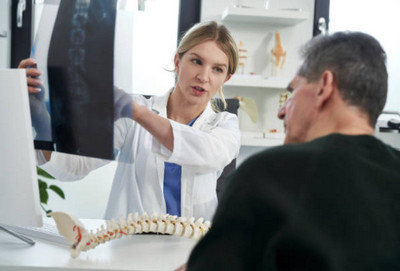There are Spine Conditions that Seem to Run in My Family. What can I do?
Genetic Spine Conditions
Recognizing familial patterns of spine-related issues can put you on the path to minimizing or possibly preventing spine problems of your own.
Here’s a general approach to using this family information:
- Symptom Monitoring: Pay attention to any symptoms related to spine health, such as persistent back pain, posture changes, or mobility issues. Early detection of these symptoms can help manage potential genetically influenced spine conditions more effectively.
- Consult a Healthcare Professional: Speak with your doctor about your concerns. They can provide a physical examination, assess symptoms, and consider your family history to determine if there’s a potential genetic component.
- Genetic Counseling and Testing: If there’s a strong indication of genetic influence, your doctor might recommend genetic counseling. A genetic counselor can discuss the benefits and limitations of genetic testing for spine-related conditions, helping you make an informed decision.
- Imaging Tests: Imaging techniques like X-rays, MRIs, or CT scans can provide detailed insights into the structure of your spine, which can help in diagnosing conditions that may have a genetic basis.
- Bone Density Tests: These tests can help assess the risk of osteoporosis, which has a strong genetic component. They are especially recommended if you have a family history of osteoporosis or fractures.
- Lifestyle Assessment and Adjustments: Regardless of genetic predisposition, lifestyle factors such as diet, exercise, and posture play crucial roles in spine health. A healthcare professional can guide you on how to optimize these factors to support your spine health.
If you’re concerned about genetic risks related to your spine health, these steps can help you get a clearer picture and manage any potential issues proactively. Also, keep in mind that environmental factors and lifestyle choices, such as activity level and occupational hazards, also play significant roles in the development and progression of spine conditions

